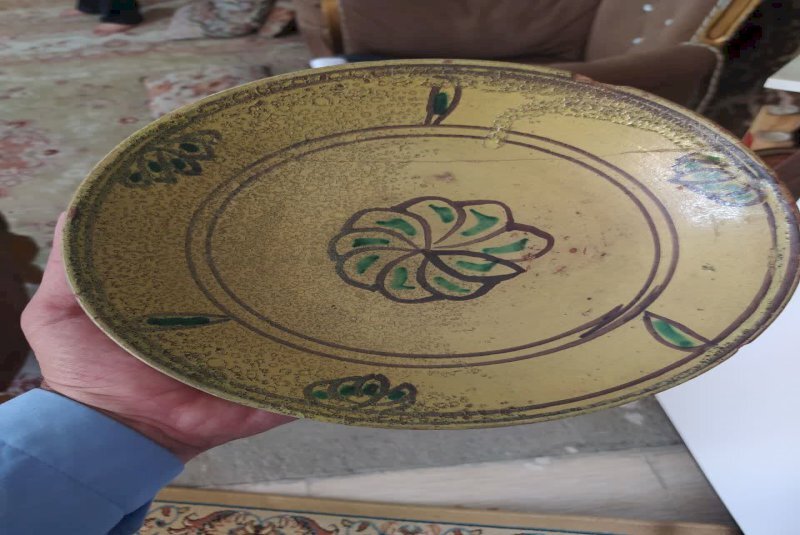Ancient plate seized from unauthorized excavator

TEHRAN – Iranian police have recovered an ancient clay plate from an unauthorized excavator in Neyshabur, northeast Iran.
The police seized the object from the home of the suspect after they received the news of his illegal digging, CHTN reported on Sunday.
In that regard, the police detained and surrendered the suspect to the judicial system for further investigation.
According to the news agency, the exact antiquity of the earthen object is under assessment by the cultural heritage directorate of Khorasan Razavi province.
Heaven for history buffs, Neyshabur (Nishapur) was once a prosperous town during the medieval times now situated northeast of modern Iran.
Situated some 70 km west of Mashhad, Neyshabur was founded around the third century CE. Narratives say “Nishapur” derived its name from its alleged founder, the Sasanian king Shapur I.
It grew to prominence in the eighth century and was ruined by invasions and earthquakes in the thirteenth century. After that time, a much smaller settlement was established just north of the ancient town, and the once-bustling metropolis lay underground—until a team of excavators from the Metropolitan Museum arrived in the mid-twentieth century.
The town underwent rounds of excavation as of 1935 by experts from the Department of Near Eastern Art at The Metropolitan Museum of Art. Hundreds of objects were discovered during the excavations. Each year, the Museum’s share was shipped back to New York, where the objects were restored and placed on display.
Furthermore, Neyshabur was a significant hub for the manufacture of glass, metal, and stone vessels as well as textiles. However, none of the latter were found in the excavations, probably due to their highly perishable nature.
AFM